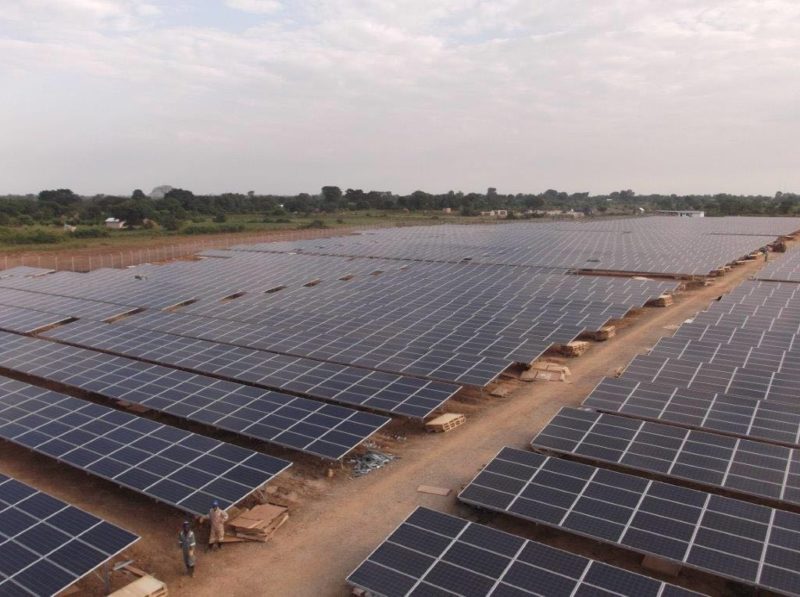The trillion-dollar question is how to have the right incentives and conditions to attract investors, writes Geraldine Ang in the LSE (London School of Economics and Political Science) Business Review

Renewable-energy technologies are critically important, both in addressing the risks of climate change and achieving Sustainable Development Goal number 7 (SDG7,) relative to affordable and clean energy. They have also become increasingly cost-competitive: the capital cost of utility-scale solar photovoltaic (PV) energy has fallen by more than 60 per cent since 2010, and that of onshore wind energy by 20 per cent.
There is no shortage of capital available globally to finance renewable-energy projects. The financial sector encompasses more than €100 trillion of assets. So how is it that investment in renewable energy is not flowing faster?
The trillion-dollar question is how we can shift incentives and strengthen the right conditions to make solar, wind and other renewable power more attractive to investors. To respect the Paris Agreement’s goal of limiting temperature rise to well below 2°C, annual investment in renewable energy needs to increase by 150 per cent between now and 2050.
New OECD research shows that incoherent policies, misalignments in electricity markets and cumbersome and risky investment conditions are among the main factors holding back investment and innovation in renewable energy in advanced and emerging countries.
In order to meet renewable energy deployment goals, policy makers need to strengthen investment conditions, from investment policy to competition, trade and financial market policy. And most importantly, specific policy incentives and climate policies should not be considered in isolation from the broader environment for investment and innovation in renewable energy.
Creating a supportive framework for renewables
At the policy level, scaling up investment in deployed renewables requires designing targeted incentives such as: feed-in tariffs (i.e. a guaranteed minimum price per unit of renewable power generated); renewable energy certificates (a certificate proving that one unit of electricity was generated from a renewables source, which can be sold separately from the underlying physical electricity associated with a renewable-based generation source); and public tenders (which include public competitive bidding or auctions for a set capacity of renewable power).
Feed-in tariffs and certificates in particular have driven investment in advanced countries, leading, for example, to an 11 per cent increase in renewables investment for each additional unit of feed-in tariff, in USD/KWh. Auctions and tenders have supported renewables investment in emerging markets (OECD analysis shows that, historically, increasing the capacity of a tender by 1 MW leads to a 0.1 per cent increase in renewables investment flows).
Explicit carbon prices (using carbon taxes or emissions trading schemes) have driven investment in renewables in the European Union and in emerging economies, and across OECD and G20 countries in solar energy. But at the same time, pressure from fossil-fuel subsidies in the electricity sector has also deterred renewables investment in emerging economies.
Incompatible incentives are worrying on a number of fronts, not only for investment in deployed renewables but also innovation in earlier-stage renewables technologies. An example: feed-in tariffs stimulate renewable-energy patents, yet policy across OECD countries and emerging economies has been shifting away from FiTs toward public tenders, to adjust to changing market conditions, control the deployment of large-scale renewables, and reduce costs for consumers.
Also, government spending in research, development and demonstration (RD&D) for low-carbon technologies is at historic lows. This has negative implications for innovation; OECD research shows that public RD&D expenditures have thus far played an important role in stimulating patenting in renewables technologies.
In addition to aligning our incentives, we need to take advantage of the fact that some climate mitigation policies enhance the positive effects of other policies when they are combined. For example, setting carbon prices while providing public RD&D spending in renewables technologies has worked well for mobilising renewables investment in emerging markets. In OECD countries, Denmark has become a leader in renewables technologies, including by providing integrated, sector-wide policy support to RD&D and deployment of renewables.
Next, we have to make the investment environment in renewable energy – especially solar and wind energy – far more attractive, and also make it easier to do business, with improvements in the following areas:
- Investment policy and investment facilitation (property registration, corruption perception, regulatory quality, licensing and permitting systems),
- Competition and trade policy (direct control of the state over enterprises, ease of trading across borders)
- Financial access (access to domestic credit for the private sector)
Finally, we need to work at making sure that the broader investment environment isn’t at odds with low-carbon investment. For example, the implementation of Basel III banking regulations – though they are important – also may have had the unintended consequence of constraining access to debt financing for capital-intensive renewable projects. Investment in renewable energy and other low-carbon technologies needs to take place on a far greater scale if we are to achieve the ambition of the Paris Agreement and the Sustainable Development Goals. Evidence-based research and stakeholder co-operation are needed to help policy makers design effective public policies that facilitate the transition to a low-carbon economy. The OECD stands ready to support these critical goals, as part of the OECD Centre on Green Finance and Investment.
